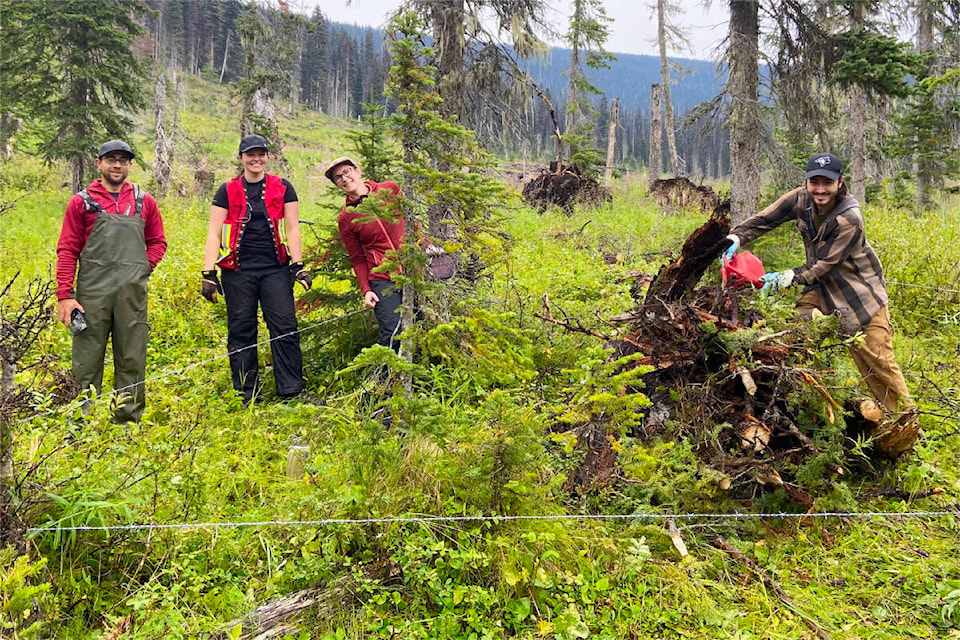Grizzlies and humans are counting on each other.
The bears are out hunting for caribou and other calorie sources. The humans are straining to understand how to restore populations of both these fragile species. It’s easier to make plans when your data is accurate, so out into the bush the scientists are going to count grizzly heads - from a safe distance.
This first-ever study is funded by the Southern Dakelh Nation Alliance and Lhtako Dene Nation. Wildlife biologist Pauline Priadka is leading the effort to identify as many of the bears as possible. To do that, the team of scientists is grabbing a bit of hair off each bear’s back to catalogue them using DNA.
Since it isn’t the wisest plan to sneak up on a bear and pull their hair, they are letting the bears donate it more subtly.
“Our project is a non-invasive way of collecting bear DNA across a range to be able to identify individuals and get a population density estimate while also being able to look at genetic diversity and see how related nearby individuals are. This can provide important information on the grizzly bear population in the area,” said Priadka. “The way we collect bear DNA without having to capture bears is by setting up hair trap stations that snag bear hair along barbed wire. We use a smelly lure to attract bears but don’t leave any food that would make them territorial or to promote them staying in that spot.”
They are starting with a 20 km by 25 km grid and will be expanding the study area for at least three years in Lhtako Dene traditional territory. The team is underway now until the end of September.
Lhtako Dene Nation members are participating in the field work and members of the Lhtako youth program are also involved.
This grizzly bear study is a priority study for Lhtako because of the cultural importance of bears for the Lhtako Nation, particularly for the bear clan in Lhtako,” said Priadka. “Bears have always held a strong socio-ecological importance for the Southern Dakelh as a keystone species and as a valued predator for species that are relied on as food, including moose and historically southern mountain caribou. This project provides the Lhtako Dene with the opportunity for autonomous wildlife monitoring of this culturally important species and will support the Nation with decision making in the future for both grizzly bears and caribou.”
At the same time, the Southern Dakelh Nation Alliance and Lhtako Dene Nation have also embarked on a multi-year southern mountain caribou genetics study that is a collaboration with both the federal and provincial governments to understand herd structure and genetic health of caribou herds in the Cariboo region.
“This is a million-plus dollar initiative that will provide answers to multiple questions related to biological viability of maternity penning etc,” said Priadka. “We are in the second year of this initiative and will be sampling the eastern herds of the Cariboo region this winter.”
The Aboriginal Fund For Species At Risk and the B.C. Ministry of Forests are also involved in supporting this scientific endeavour.
READ MORE: Mountain goat population declining in British Columbia: study
READ MORE: Caribou recovery plan sees 156 wolves culled in West Chilcotin mountains in last 3 years
***
Don’t miss out on your local news. Direct access is only a couple of clicks away, to have the paper delivered, or get the daily updates…
